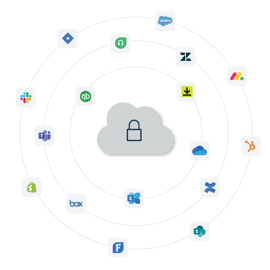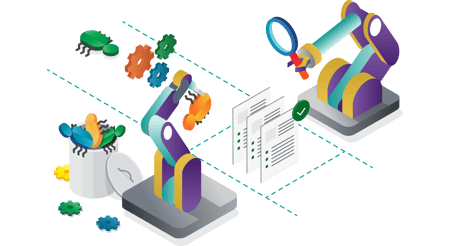Estimates of data created every year range widely, but everyone agrees: We’ve entered the zettabyte (ZB) age. What’s a zettabyte? It’s a trillion gigabytes, or one followed by 12 zeros, or 1,000,000,000,000.
One often-cited estimate for how much data will be produced in 2024 is 147ZB. That’s more than four times all the digital data in the world in 2018, which was just 33ZB.
Data is more than just newly created files, such as tables or worksheets. It encompasses all versions of a file that are copied, stored, or consumed. Consider the number of times a single user creates, shares, and stores an image or document in various locations. Now, multiply those actions by every employee.
Additionally, the data generated by the numerous Software-as-a-Service (SaaS) applications used daily by an employee contributes to this mix. The rapid adoption of SaaS, which shows no signs of slowing down, means that the average organization uses more than 130 SaaS apps.
Not only is the volume of data constantly growing, it’s also being siloed across a wide array of apps in various digital and geographical locations. Even knowledge within a company of where data is created and stored can be highly compartmentalized.
For instance, the app usage profile of a marketing department will differ from that of a DevOps unit. While all departments may use productivity apps, the marketing department will likely be heavy users of CRM, content management, and analytics tools.
Understanding the complete data inventory of an enterprise is crucial for making informed decisions about the storage and management of that data.
- Knowing the volume and location of data your organization creates may influence what kind of backup solution or solutions to use.
- SaaS vendors who operate in a consumption-based model may charge for storage. By understanding data growth, organizations can better predict and manage these costs, ensuring they get the most out of their SaaS investment.
- Large volumes of data can impact the performance of SaaS apps. By monitoring data growth, organizations can address performance issues, ensuring optimal operation of SaaS apps.
- Many industries are subject to regulations governing how they manage and store data. Keeping all this data backed up and in house ensures compliance, avoiding potential fines and reputational damage.
The best way to know an organization’s comprehensive data footprint in its SaaS apps and know its rate of growth is to have a comprehensive backup plan. That way, data can be logged and recorded over time, leading to valuable insights. Any automation or one-console control of backup work is key to doing this efficiently. The sheer volume and complexity of cloud data makes automation in any form a necessity.
Many organizations may try to simplify the task by just concentrating on backing up and storing a few “key” apps. No matter where data resides, however, the volume grows over time. This means a gap inevitably grows between what is backed up (partially) and all the data that should be backed up. To get a comprehensive view of an organization’s data footprint, this gap needs to be closed.
SaaS apps may offer access to downloads, but how often data is backed up and in what formats is not always under the control of the customer. A weekly backup in an un-encrypted CSV file may not fit an organization’s needs to have a one-day Recovery Point Objective (RPO), for example.
The increasing use of AI-assisted tools is affecting data volumes too. Generative AI especially is being rapidly adopted by many organizations to create content (text, code or images). The net result is even more content creation by more users, faster than before.
It seems content and data creation keep going in one direction—up.





